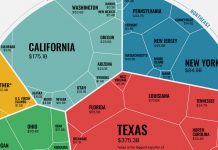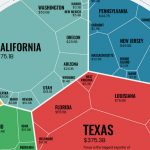Environmental change is undermining the eventual fate of the globe. Outrageous climate conditions have drawn into light a legitimate concern for strategy producers, who ask the need to make a move. The UN Climate Change Paris gathering in December 2015 set forward a constraint of a 1.5°C expansion in normal worldwide temperatures comparative with that predominant before the Industrial Revolution. This cutoff must be reached by radically cutting fossil fuel byproducts. The change to a carbon-unbiased economy requires raising the ecological cognizance of firms and banks. We along these lines ask how bank financing can add to arriving at the worldwide environment targets.
In our new paper (Degryse et al. 2021), we research whether and how the natural awareness (“greenness,” for the shy) of firms and banks is reflected in the valuing of bank credit. Utilizing an enormous global example of partnered advances, we observe that organizations are for sure compensated for being green as less expensive credits — however just when acquiring from a green consortium of moneylenders and solely after the endorsement of the Paris Agreement. Henceforth, we see that natural perspectives matter when “green meets green.”
Our experimental investigation requires intermediaries for the greenness of banks and firms. We order a firm as green assuming it intentionally reports to the Carbon Disclosure Project, a financial backer situated charitable drive to work with and normalize revelation of a company’s natural effect. Firms answering to the Carbon Disclosure Project are relied upon to have better in-house capacities to gauge and deal with their openness to the green progress of the economy, which can be seen as proof of their ecological cognizance.
Banks are named green assuming they are individuals from the United Nations Environment Program Finance Initiative, which intends to “assemble private area finance for the manageable turn of events.” Since its creation in 1991, in excess of 160 banks have joined the Initiative. There is proof that the Initiative’s signatory banks can give green bonds with a premium since they can all the more plainly signal their ecological mentalities in loaning (Fatica et al. 2019).
Utilizing these intermediaries, we investigate the value data of partnered credits involving a far-reaching worldwide partnered advances data set for 2011–19. Our outcomes recommend the presence of a measurably and monetarily huge “green meets green” impact. We gauge that green firms partake in an extra markdown of 35-38 premise focuses when getting from green banks rather than from nongreen (“brown”) ones.
We further look at whether the Paris Agreement, which was reached on December 12, 2015, impacted the connection between the banks’ and firms’ natural mentalities and advance credit spreads. While the green-meets-green impact is unimportant before the Paris Agreement, it is genuinely and financially huge later the arrangement.
Specifically, the “later the Paris Agreement” subsample shows that green banks offer green firms a markdown of around 60–69 premises directed relatively toward earthy colored firms. Generally speaking, the green-meets-green impact is personally connected to the progressions achieved by the Paris Agreement. We further affirm this with a distinction in-contrast in-contrasts relapse model.
For what reason would the Paris Agreement in a roundabout way affect loaning terms, and for what reason is this confined to green banks? The Paris Agreement can be deciphered as a change in the view of environment progress hazards, both by firms and by banks. A large part of the troubles in overseeing hazards identified with environmental change is ascribed to the exceptionally unsure genuine effects of environmental change and the endogenous idea of future arrangement stuns that influence the progress to a low-carbon economy (Campiglio et al. 2018). Notwithstanding, changes in general assessment could prompt political strain to fortify ecological guidelines, which could hurt firms that don’t expect such shocks.
For instance, in May 2021 Royal Dutch Shell, a central part of the oil and gas market, was requested by a Dutch court to cut its fossil fuel byproducts quicker, overruling the company’s own change plans. This motioned to the market an improved probability that the legal executive framework would become associated with environmental issues later on.
We foster an adapted hypothetical model to clarify why a strong green-meets-green example has arisen later in the Paris Agreement. We contend that increased view of the carbon change hazard — following the world chiefs’ reverberating obligation to a carbon-nonpartisan future — may have boosted a subset of banks (green banks) to take part in third-degree cost segregation concerning firms’ greenness, bringing about harmony in accordance with our assessed green-meets-green evaluating designs.
As the assumption for an administrative shift — and the likelihood of a negative shock — increments, so do the organizations’ and banks’ harmony ecological perspectives. In a dubious climate inclined to unexpected balance shifts, there is a solid accentuation on open occasions that anchors assumptions and direction the conduct of monetary specialists.
The Paris Agreement, as the world’s first extensive environment arrangement, raised public consciousness of environment-related dangers and expanded strategy producers’ obligation to stricter authorization of environment strategy. This moved financial backers’ view of environment progress hazard, accordingly physically affecting harmony costs.
Ongoing examination contends that nations that depend on capital business sectors more than on banking are more approaching in managing environmental change (De Haas and Popov 2018). Our discoveries, nonetheless, show that (basic parts of) the financial frameworks may likewise be helpful for the change as banks are well-valuing credits to green firms comparative with earthy colored firms. This holds when banks have a comparative ecological awareness — our “green-meets-green impact.” Putting environmental change on the plan through the Paris Agreement has encouraged this demeanor.


































